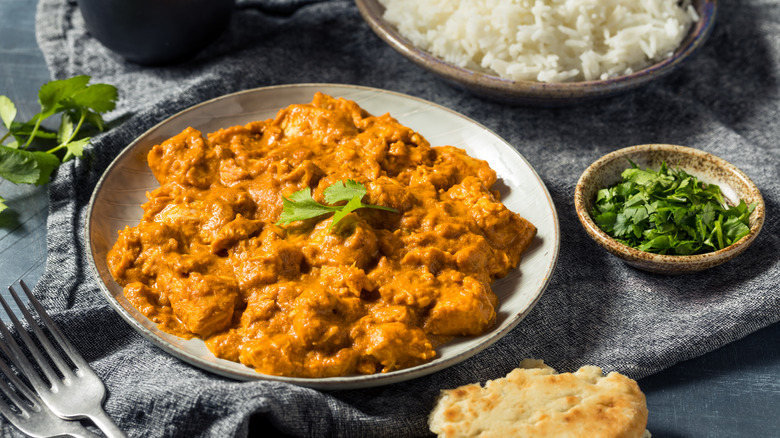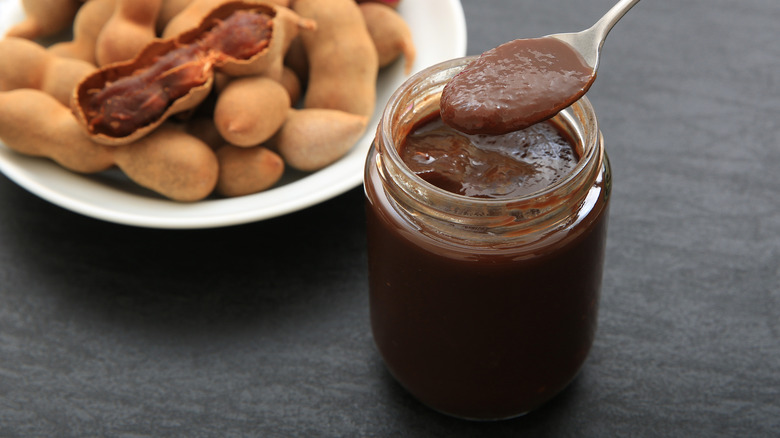The Tangy Ingredient You Should Add To Your Next Coconut Curry
Making a straightforward coconut curry is already exciting enough. It's sweet yet spicy and oh-so-savory. Maybe you're throwing together a seafood coconut curry with shrimp and white fish. This Vegetable Coconut Curry by recipe developer Catherine Brookes is packed with eggplant, red bell pepper, butternut squash, cauliflower, tomatoes, and green beans. However you make your coconut curry, even if it's awesome (and we're sure it is), there's one tangy ingredient it's desperately crying out for: tamarind.
According to Encyclopedia Britannica, tamarind comes from the fruit of a tree indigenous to tropical Africa. The fruits resemble bean pods, and they are filled with seeds and a sweet-sour pulp, which is scooped out and turned into a paste. It's nicknamed "The date of India," says Healthline, and it's a popular ingredient in cuisines of Central America, Mexico, Southeast Asia, the Caribbean, and the Middle East. In many Indian dishes like paani puri, samosas, and kachori chaat, tamarind is a staple (per Bon Appétit). It can be incorporated into sauces, chutneys, desserts, and even beverages. (Tamarind Whiskey Sour, anyone?) In the realm of traditional medicine, tamarind paste has been used to address digestive health, lower fevers, heal wounds, and help treat malaria.
Is your stomach growling yet? It should be. Swing by your local pan-Asian supermarket and you're likely to find a brick or a jar of tamarind paste. Here's why it works for your next coconut curry.
Stir in some sweet-sour tamarind paste
Tamarind offers a uniquely dimensional flavor profile in that it's pungent, tart, bitter, sweet, sour, and tangy all at once. MedMunch describes the taste as a sweet, fresh lemonade with a pump of thick caramel on the back end, which might sound like an odd fit for bright, savory coconut curry. But, explains Delish, tamarind's unique taste is naturally complemented by many of the other primary spices in Indian cuisine: ginger, garlic, and chili. It'll fit right in with the flavors already existing in your curry and balance them out. Tamarind also introduces a "background sweetness," says the outlet, that would be further accentuated by the coconut milk in your curry.
There's a utilitarian reason to add a little tamarind paste into the mix, too. If you love the taste of curry but don't have a particularly strong threshold for spiciness, tamarind is your new lifesaver. Per Bon Appétit, tamarind can help quell the mouth-fire of spicier foods. But, as eagerly as you might be scooping that tamarind paste, scoop with discretion. According to the Filipino food blog Ang Sarap, an entire soup pot full of tamarind coconut curry (roughly four servings) requires just 2 tablespoons of tamarind pulp to impart its signature flavor. Serving that coconut curry with a scoop of mild jasmine rice or a few pieces of naan could emphasize the tamarind's punchy flavor.

